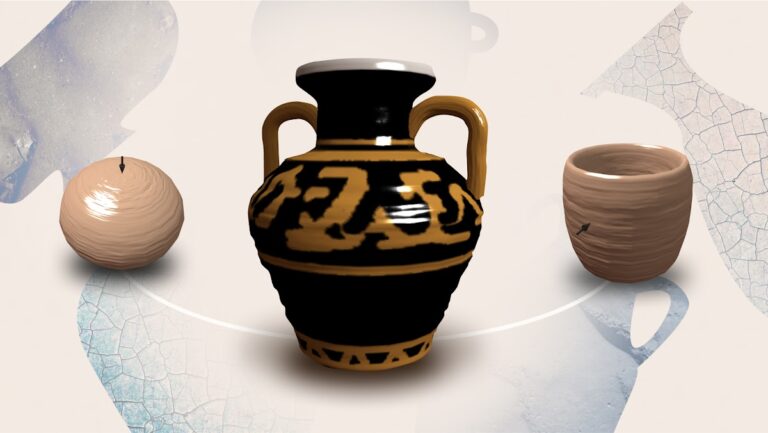The intersection of traditional craftsmanship and current generation has given rise to an interesting and revolutionary artwork form: 3d pottery. This fascinating mixture of old and new strategies is revolutionizing the manner we create and admire ceramic art. In this article, we can delve into the origins, techniques, advantages, challenges, and future capacity of 3d pottery, providing a comprehensive review of this burgeoning subject.
The Origins of 3D Pottery
The idea of 3d pottery emerged from the need to innovate in the ceramic arts. Traditional pottery, with its deep historical roots, has always been a labor-in depth procedure requiring good sized talent and endurance. However, the arrival of 3D printing generation provided a brand-new perspective. The first experiments in 3d pottery began in the early 2010s whilst artists and engineers started exploring the potential of 3D printing to create ceramic items. By adapting 3-d printers to handle clay and different ceramic materials, they have been able to produce complex and complex designs that might be difficult, if no longer not possible, to obtain by way of hand.
Techniques in 3d pottery
3D pottery entails the usage of specialized 3D printers designed to handle ceramic substances. These printers typically use a technique called additive production, in which the item is constructed layer by means of layer from a digital model. The method starts offevolved with an in depth 3-D layout, normally created the use of laptop-aided layout (CAD) software program. The design is then transformed into a layout that the 3D printer can interpret. The printer extrudes the ceramic fabric via a nozzle, layer by way of layer, until the preferred shape is carried out.
One of the key techniques in 3D pottery is making sure the ideal consistency of the clay. Unlike plastic or metal used in conventional 3-D printing, clay desires to be saved at a selected moisture degree to keep its shape during printing. Additionally, put up-processing steps including drying, firing, and glazing are essential to accomplishing a completed product that is both useful and aesthetically appealing.
Benefits of 3D Pottery
The benefits of 3d pottery are manifold. Firstly, it allows for exceptional precision and complexity in design. Artists can create complex styles and shapes that could be extraordinarily challenging to execute with the aid of hand. This opens up new innovative possibilities and permits the manufacturing of particular, customized portions.
Moreover, 3d pottery is efficient in terms of cloth utilization. Traditional pottery strategies often bring about widespread waste, as extra clay need to be trimmed away. In comparison, 3-d printing makes use of simplest the quantity of fabric essential for the item, reducing waste and making the system more sustainable.
Another substantial advantage is the capacity to copy designs appropriately. Once a virtual model is created, it is able to be published multiple times with regular quality, making it best for mass manufacturing or growing matching units.
Challenges in 3d pottery
Despite its advantages, 3d pottery comes with its own set of challenges. One of the primary issues is the value of device. High-exceptional 3D printers capable of handling ceramics are luxurious, which can be a barrier for person artists and small studios.
Technical demanding situations additionally abound. Ensuring the right consistency of clay and preventing clogging in the printer nozzle can be difficult. Additionally, the drying and firing processes should be cautiously managed to save you cracking or warping, that are common issues with ceramic materials.
Moreover, there’s a gaining knowledge of curve associated with gaining knowledge of the software and hardware involved in three-D printing. Artists must familiarize themselves with CAD packages and recognize the intricacies of the 3-D printing manner, which may be time-ingesting and complicated.
The Future of 3d pottery
The future of 3d pottery is brilliant, with continuous improvements in generation promising to triumph over among the cutting-edge demanding situations. As 3-D printers come to be extra low cost and on hand, more artists could be able to discover this medium. Innovations in materials science may also cause the development of latest ceramic composites which can be less complicated to paintings with and greater durable.
In addition, the mixing of artificial intelligence (AI) in layout methods should revolutionize the manner we create ceramic artwork. AI-driven design tools may want to help artists in generating complex patterns and optimizing their designs for printing, similarly increasing the creative possibilities.
Collaborations between technologists and conventional potters may also result in hybrid strategies that combine the pleasant of each worlds, retaining the artisanal excellent of home made pottery while leveraging the precision and efficiency of 3-D printing.
Conclusion
3d pottery stands at the crossroads of way of life and innovation, providing a clean tackle an historic artwork form. By merging the meticulous craftsmanship of conventional pottery with the modern competencies of three-D printing, artists are pushing the limits of what’s possible in ceramic artwork. While there are demanding situations to overcome, the capability advantages and destiny advancements make 3d pottery an interesting and dynamic area well worth exploring. Whether you’re a pro potter or a generation fanatic, the sector of 3d pottery invitations you to imagine and create in approaches previously unthinkable.
